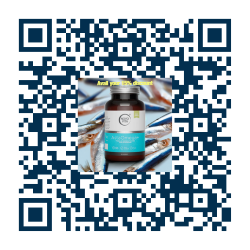I dress myself, not to impress, but for comfort and style
Lindsey Wixon
Understanding sustainable fashion has evolved in many creative ways. Some are fond of true vintage and retro style warddrobe, while others are into a more environmental and trendy side called upcycled apparel, and some are loyal fans of known branded and signature clothing. For many years I have been buying and giving away the clothes I was purchasing from store to store. Gathering clothes that are on sale and as cheap as it could get was one of my to-do lists. This is not because it was the only thing I could afford, but the thought of it looks good on my eyes might look and feel good as well. In reality, it was a waste of money and resources. At one point I got tired of sorting them out and cleaning up my closet was an unending sad routine.

Two years ago, I started investing in natural fabrics like linen and organic cotton. In the first year, buying from known mass produced brands was a good idea. Through my experience, they are indeed a random of good and bad quality. Polyester was a cheap solution to produce clothes in the fashion industry, that unfortunately degrades the quality of a beautifully designed piece of apparel. In some cases, mixing polyester with cotton or viscose and any other fabric natural fiber makes the quality better and makes it lasts longer.

I kept reading and researching and started outsourcing, since my hunt for a good clothing was not yet over. While living in the nordic country where locally produced and carefully designed clothing is preferred, I on the contrary was a little challenged, that is finding the right size primarily. One solution might be taking the clothes to the tailor and you definitely need to allocate a budget for it. Luckily, I found a local designer who is willing to make clothes for me. She designs clothes using organic cotton, velvet in lively colors and with nature-inspired prints for women and young girls.

Good to know. Facts from the Technological Institute in Denmark.
When are clothes organic?
If you go for clothes made of organic cotton, there are three general criteria for when you can say that cotton is organic:
- Do not use pesticides, insecticides or foliar felling agents
- Fertilizer must not be used
- Genetic modification (GMO) must not be used
When it comes to organic cotton clothing, there are several different labels to go for, e.g., you can look for; GOTS (Global Organic Cotton Standard) and CMIA-Organic (Cotton Made In Africa).
In my own experience and learnings.
Why Linen is good for you?
Linen is of natural fiber and it has anti-bacterial properties that makes it ideal for people with skin allergies. It is elegant as it is considering that it is also a fashion statement of those living in tropical countries. It is a little costly than cotton, but definitely cheaper than silk. You will also enjoy how light and airy it feels during the summer time. As with any other fabrics, following the care instructions for washing it will benefit you in the long run. The only cons of linen is that it demands ironing. It wrinkles easily, but that is one of the characteristics of it. Linen bedsheets are also recommended as they like silk fiber, naturally repels unwanted microscopic organisms, therefore reducing bad odor and allergic reactions. Linen doesn’t need to be washed at high temperatures for it is a natural fiber. It is preferred to be washed at 40 degrees celsius using non-bleaching soaps or in my case, I uses liquid soap especially formulated for fine or wool. It works for me and my family. Reduce the use of fabric softeners, as this has chemicals that are not good for the environment. In rare cases, fabric that are prone to statics, a little amount of it would be effective in minimizing it. It is wise to choose your washing detergent carefully by reading the labels before purchasing or make a research about the contents. Me and my husband uses Forbrugerrådet Tænk as a guide for some products that we would like to invest, especially appliances, children’s necessities, food and cosmetic brands.
Thank you for reading. You might also want to read A Stronger Bond, which also talks about enriching culture thru fashion and promoting sustainability.
Sincerely,
Sheree Ann Kratmann Indiongco
This article is not sponsored.
I recommend you to watch Plastic Pollution
info.bloomingetiquette@gmail.com

